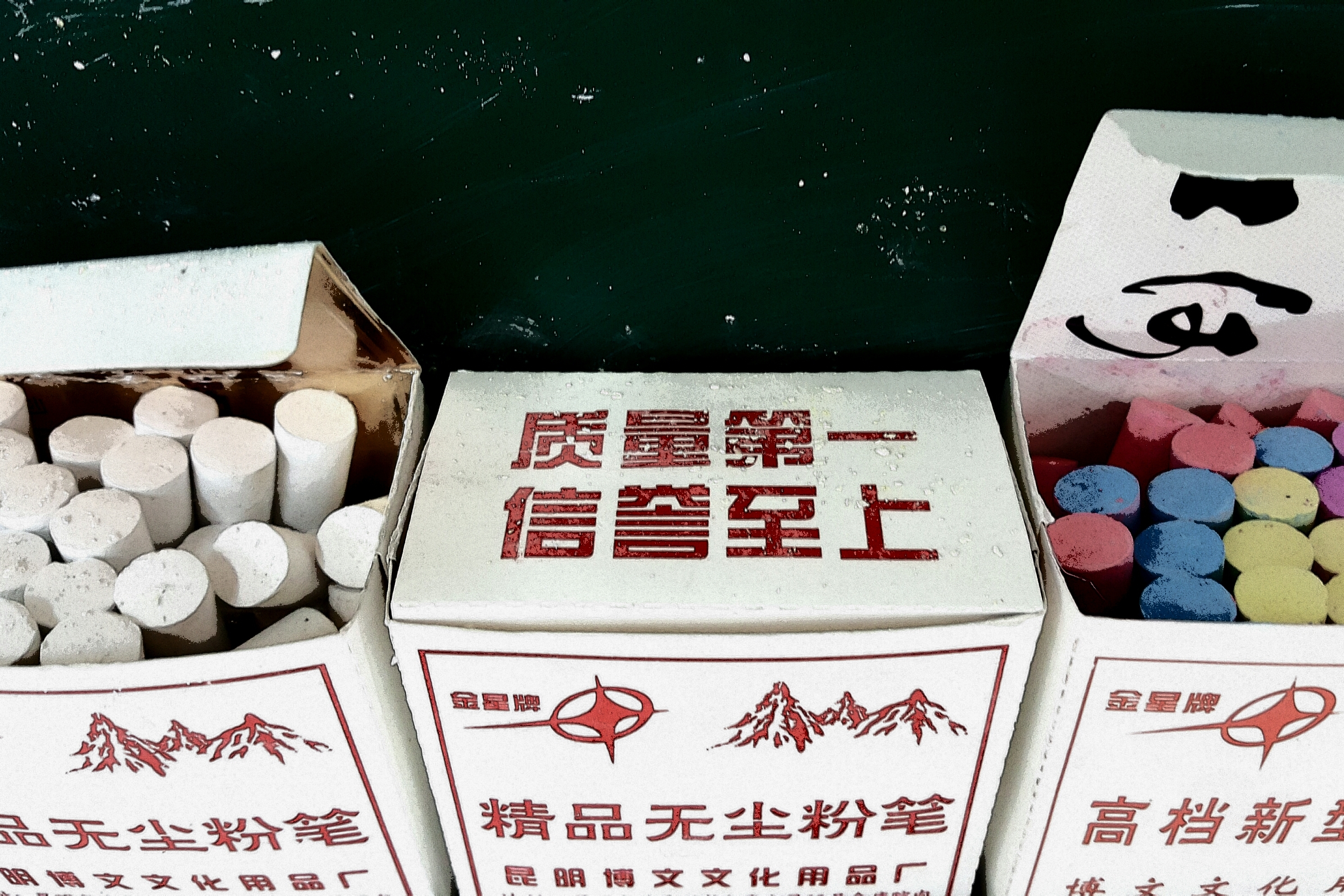
Antagonistic To Churn And Burn Tech Convergence
I was both surprised and extremely happy to see these boxes of chalk and a massive old school blackboard in the rooms allocated by Yunnan Normal University (YNNU) for delivery of this course. Surprised because apart from my three year old daughter’s tiny blackboard set I have not seen chalk used in education for decades. And extremely happy because in an age of technological progression and convergence and the associated and increasingly strong push for higher education to go ‘pure play online’ – the existence of chalk in these rooms contradicted it all.
.
In an increasingly virtual world chalk exists as a stark contrast. You can pick it up, touch it, and make a mess with it. It is tangible. Visceral. It is real. And to me it conveyed two things. The first was a sense durability and longevity – concepts important to the higher education sector and to individual universities. The second was that it acted as opposition to the fleeting, churn and burn nature of our ubiquitous technologically converged environment. An environment driven in a large part by our wholehearted engagement with participative, user-generated components of the web where a user’s 140 character tweet, status update, blog post, or video edit is consumed, discarded, and forgotten within 24 hours. The chalk in these rooms was antagonistic to a digitized world more often than not, comprised of unimportant and fleeting noise.
.
The biggest impact technology has had on higher education is that it has simply removed the walls that once contained knowledge, making it an easily accessed public commodity and forcing higher education to rethink the nature of its product. This is the evolution of education where technology is now simply the medium in which we play the game. Technology has also provided students with more ways to maintain a ‘presence’, interact with universities, and complete degrees (essentially providing them reach, control, power, and the opportunity to create distance between themselves, their lecturers, and their university). In the short term this just makes them harder to engage. Whilst it does provide us limitless opportunity to create an improved and more relevant educational product if we get it wrong we may simply speed up society’s progression towards a dehumanized, machine driven society.
.
“ Jaron Lanier once offered that “technology is “designed to act as if people are machines” and if “we continue to follow the path it is currently leading us down, we will demean and weaken human interaction, abolish individuality, become subservient to the structure of these machines”, (Lanier, 2010; Schwartz, 2013). Far fetched? Possibly. However I would be reluctant to argue against him. Lanier is a technologist, was instrumental in setting up the infrastructure of the Internet, was a key figure in the digital revolution, and played a significant role in the invention of virtual reality. Whilst he originally aimed to create technology that would deepen the way the human race understand their world, over the past ten years he has ‘developed a philosophical position that strongly refutes the idea that we should follow the path that technology is leading us down’ (Schwartz, 2013, p. 83). Lanier is a humanist and whilst in no way would he be considered anti-technology, his ideology positions close range human interaction as vitally important.
.
The chalk in these rooms provided me with the ability to maintain close range human interaction. And close range human interaction is still one of the most powerful forms of communication we have at our disposal. Whilst we blindly believe technology can put us in touch with a greater amount of people there is the very real possibility that “this is just an illusion that may cheat us of being in touch deeply with the ones breathing right next to us” (Anais Lin, in Popova, p.28). The chalk in these rooms provided me with the opportunity to get students down the front and scrawl their opinions, thoughts, and ideas onto the blackboard in an illegible mess. It provided other students the opportunity to laugh at their colleague’s illegible mess and throw out ideas to rectify any flaws in their argument. It provided me with an open door to look into their eyes, shake their hand and say, “Thanks for your help on this one. I cant read a word. But nice work anyway”. The chalk in these rooms allowed me to form a close range physical connection and a relationship with people who were breathing the same air. An ideal crucially important to upholding higher education’s offer of powerful, engaging, and inspirational learning environments. The chalk in YNNU’s learning spaces counteracted the distance technology creates.
.
Talk soon. Jason.



No Comments